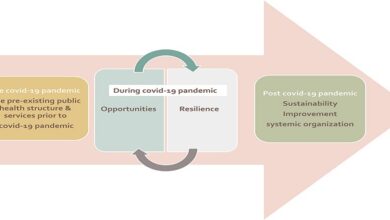Sherpa-Led Gokyo and Everest Base Camp Trek A True Himalayan Adventure

This Gokyo and Everest base camp trek led by a Sherpa encapsulates a genuine Himalayan adventure. This trip of a lifetime exposes trekkers to unparalleled views of the world’s highest peaks, including Mount Everest, with the guidance of the area’s most seasoned and informed locals. Sherpas are an intrinsic part of the Himalayas, and their familiarity with the land and adeptness at scaling treacherous terrain makes them excellent companions for every memorable journey.
The journey begins with a thrilling flight to Lukla, a mountain town, from where a series of scenic ascents take trekkers through Sherpa villages, lush valleys, and alpine meadows. However, as you climb to higher altitudes, the scenery changes to a stark combination of glaciers, rocky trails, and giant mountain peaks. Especially the trail to the Gokyo Lakes, a series of peaceful, sapphire-hued glacial lakes set against a backdrop of snow-dusted peaks. At the top of Gokyo Ri, trekkers are treated to sweeping views of Mount Everest, Cho Oyu, Lhotse, and many more Himalayan behemoths.
As you continue your journey up to Everest Base Camp you will pass by famous sites including the Khumbu Icefall and several memorials dedicated to deceased climbers. But it’s not until trekkers set foot at Everest Base Camp and look up at the peak looming over them that they comprehend the size of the challenge that awaits those who will go on to attempt to summit the world’s highest mountain.
Sherpas are an integral part of the trek and they work day in, and day out to ensure your safety, health, and enjoyment. Their experience with understanding the local environment and weather conditions along with how to manage altitude is essential for your journey to go smoothly. Sherpas also enhance the experience by providing insights into the rich culture, spirituality, and traditions of Sherpa people. That said, you spend a few nights/days at their lodge as well which makes for major added convenience as well as an opportunity for you to interact with some of the locals which adds to the experience!
By Gaurav Upadhyay This is an intro to the Himalayan adventure series. On slowly unboxing the expedition includes a few days of acclimatization, carves out a new sense of foray through, bushy trails, and uphill slopes, and creates a lasting connection between nature and man.
Hiking to Everest Base Camp and Gokyo Lakes — the Himalayan Adventure. Known as the abode of the gods, the Himalayas are home to the highest peaks on earth, including Mount Everest, the highest point on the planet. Trekking in this area provides a unique chance to see some of the planet’s most stunning landscapes — from sprawling glaciers and alpine meadows to deep valleys and jagged ridgelines. Apart from natural beauty, they also experience unique culture; the most common one is the Sherpa community — which lives in these mountains. The Himalayan Adventure focuses as much on the development of the self as it does on the magnificence of the scenery. Whether it’s trekking to Everest Base Camp, the starting point for climbing the world’s highest mountain, or checking out the gorgeous Gokyo Lakes, it’s all about experiencing the natural and religious splendors that today’s visitors have seen for themselves for centuries. The journey is not for the faint-hearted and involves time and effort to get there, but the reward is bountiful from the epic landscape to the erudition into the tenuous balance between man and the mountain. But for the more adventurous adventurers out there who want challenges and want to take in the culture, the majestic Himalayan trek to Gokyo Lakes and Everest Base Camp is literally the trip of a lifetime.
Why You Should Hire A Sherpa For Your Trek
Everest Base Camp with Gokyo Lake Trek Package This is where the sherpas play a major role in making a trekking experience in the Everest region, such as Gokyo Lakes and Everest Base Camp, a successful and beautiful adventure. Descended from the Khumbu region of Nepal, Sherpas are known for their superhuman stamina, intimate understanding of the mountains they oversee, and adeptness at negotiating the inhospitable terrain. They are more than mere guides — they are caretakers of the trek, responsible for the trekkers’ safety, comfort, and successful navigation of the trail. Many Sherpas are also trained in high-altitude first aid, which means they are capable of recognizing early signs of altitude sickness and helping trekkers manage it. They know the local geography and weather patterns like the back of a hand, helping trekkers sidestep anything dangerous, and they offer invaluable insight into the region’s history, culture, and Buddhist practices. Furthermore, Sherpas also carry heavy loads which ease the trek for travelers so that they can concentrate better on the challenge, both physical and mental, of the journey. It was inspiring to experience their warm, welcoming personalities and resilience, and their deep connection to the land added a cultural richness to the trek. Sherpas also provide camaraderie, which makes the grueling hike seem like a group endeavor rather than simply a quest to test one’s limits. A Sherpa by your side will not only boost your safety but also give you the experience you will enjoy as he will guide you through the journey like no one else, which is why he is the best companion on this amazing journey to the top of the Himalayas.
Trek Highlights: Gokyo Lakes and Everest Base Camp
Of all Nepal’s adventures, the Gokyo Lakes and Everest Base Camp trek is one of the most popular, merging the annual beauty of the Gokyo Lakes with the iconic, historic Everest Base Camp. This is a varied trek that allows trekkers to sample the remote villages of the Khumbu region, its high-altitude landscapes, and pristine glacial lakes, all in the company of some of the world’s highest mountains. The trek starts in the active town of Lukla, which trekkers fly into before continuing on the trek. The initial part of the trek reaches Namche Bazaar, the port of entry for trekkers and climbers seeking Everest. The trail then climbs to the Gokyo Lakes, a series of turquoise-colored glacial lakes surrounded by jagged mountain peaks like Cho Oyu and Makalu. It was Gokyo Ri where you can see Everest and Lhotse and other peaks at the same time. Then the trek moves toward Everest Base Camp, where trekkers are inspired by the presence of Mount Everest, one of the top lifters in the world. Along the way, trekkers pass Buddhist monasteries, follow high-altitude passes, and take in breathtaking views of glaciers, icefalls, and snow-covered peaks. This trail offers a total Himalayan experience—nature, culture, and satisfaction being able to reach both the Gokyo Lakes and Everest Base Camp.
When is the Best Time to Go on the Trek?
The ideal time to undertake the Gokyo Lakes and Everest Base Camp trek is during the spring (March- May) and autumn (September–November) seasons. These spells offer the stablest weather and best trekking conditions for high-altitude treks in Nepal. In spring, the days are usually warm and suitable for walking, and the region’s flora — particularly rhododendron flowers — sprouts, adding colors to an already beautiful landscape. Spring is also one of the best times of year for clear views of the surrounding peaks with low rainfall. Autumn tends to offer the same conditions, with dry, crisp air and clear skies, which give trekkers the clearest views of Mount Everest, Cho Oyu, and other high-altitude peaks. Cooler temperatures and generally dry weather make trekking more bearable at altitude levels. The spring and autumn seasons are known as the trekking “shoulder seasons,” and fewer trekkers are out in the popular treks than in the winter and summer peak months, thus providing a quieter and more personal trekking environment. On the other hand, the summer monsoon season (June to August) brings heavy rainfall, muddy trails, and mudslides, which makes trekking dangerous. The December to February winter months can be particularly cold with snow and high winds making trekking more difficult and unpleasant. So generally the best seasons to start your Gokyo Lakes and Everest Base Camp trek to get the best weather, best safety, and best trekking experience would be in the spring and autumn.
Some Physical Preparation and Training Tips
Being physically prepared is absolutely crucial to completing the Gokyo Lakes and Everest Base Camp trek as the trek requires days of high-altitude walking, steep ascendents, and long hours of trekking on rugged terrain. The hike requires endurance, strength, and stamina; training for months before you depart is a must to be fit. So, long days of trekking require aerobics, so you may start running, cycling, swimming, or hiking, and make sure that some workouts are carried out as fast as possible, and some are at a slower pace to develop your cardiovascular system. So, instead of just summarizing what you have learned you can help prepare for the trail by working on your fitness through interval training getting out for long distances walking around with a weighted backpack. Strength battery is also essential to working muscle mass in your thighs, core, and top body because the surface is oftentimes more complex and the strong basis of strength helps prevent injuries. Also, mobility exercises such as yoga improve balance and help avoid stiffness — useful for energy on long trekking days. To prepare for the trek, in the weeks before, take practice hikes in mountainous or uneven terrain to expose your body to the physical challenges of high-altitude trekking. Psychological preparation is also crucial since the trek can be mentally challenging because of the length, altitude, and physical effort involved. Focus on what you need to achieve on a daily basis, and be assured that with good training you will be ready for this once-in-a-lifetime experience.
Day Wise Detailed Itinerary of the Trek
EBC and Gokyo Valley Trek It usually takes 12-14 days to complete the Gokyo Lakes and Everest Base Camp trek, depending on the pace and acclimatization needs of the trekkers. Here is a rough itinerary for the trek:
Day 1: Fly to Lukla and trek to Phakding
Your adventure starts with an hour-long scenic flight to Lukla & a short trek to Phakding where you stay your first night.
Day 2: Phakding to Namche Bazaar
This portion of the hike is mostly in green forests and across suspension bridges spanning the Dudh Koshi River before climbing to the largest Sherpa town in Khumbu: Namche Bazaar.
Day 3: Rest and acclimatization day in Namche Bazaar
An essential day of acclimatization to get used to the altitude, with a hike (optional) to the Everest View Hotel for grand views of Everest and other peaks.
Day 4: Namche Bazaar to Dole
Continuing on, further into the Everest region, the path carries you past alpine meadows — and stunning views that continue to unfold — as you move toward Dole.
Day 5: Dole to Gokyo
From here, you continue on to your next trekking destination, eventually arriving at the beautiful Gokyo Lakes, where you can relax and take in the beautiful scenery.
Day 6: Gokyo Ri and Gokyo Lakes
A trek up to Gokyo Ri for stunning views of Mount Everest, Cho Oyu, Makalu, and other peaks, followed by a rest day by the Gokyo Lakes.
Day 7: Gokyo to Lobuche
The trail continues the next day to the town of Lobuche, with spectacular views of glaciers and mountains along the route.
Day 8: Lobuche to Gorak Shep
From Lobuche, you head to Gorak Shep, where trekkers will rest before heading to Everest Base Camp the next day.
Day 9: EBC and back to Gorak Shep
A trek high point — trekking to Everest Base Camp, where trekkers behold the Khumbu Icefall and surrounding mountains, before returning to Gorak Shep.
Day 10: Gorak Shep to Pheriche
Once back at a lower altitude, you hike to Pheriche, a key acclimatization stop.
Day 11 Pheriche to Namche Bazaar
The trek continues with a long downhill trek back to Namche Bazaar.
Day 12: Namche Bazaar — Lukla
After one last descent, trekkers arrive back in Lukla, where they spend the final night of the trek before flying back to Kathmandu.
The itinerary includes time for proper acclimatization, so you will be ready for the high altitudes but also plenty of time to enjoy the stunning landscapes and local culture.
Dealing with Altitude: Acclimatizing
Everest Base Camp via Cho La Pass Acclimatization is one of the key factors that play a significant role in any high-altitude trek and even more so in the case of the Gokyo Lakes and Everest Basecamp trek. As hikers move higher, the air gets thinner, and the oxygen content drops, which can lead to altitude sickness if not properly managed. The hikes to Everest Base Camp and Gokyo Lakes include a massive amount of elevation gain, with the destination itself sitting at over 5,000 meters above sea level. In order to prevent altitude sickness, trekkers need to trek higher gradually and give the body time to acclimatize.
Sherpas are the best in the world at managing acclimatization, and their experience in the area is invaluable. They know the physical symptoms of altitude sickness and have a knack for pacing the trek so trekkers ascend at a safe clip. They build in rest days at key points along the route in order to help your body adapt, and as locals, they’re able to make adjustments to the schedule as needed based on familiarity with the terrain and weather. If any symptoms of altitude sickness do arise, Sherpas are trained to handle the situation, telling trekkers to rest or descend as necessary. This is the best way to make sure trekkers will cope with the altitude challenges they’re facing, while also traveling healthy and safe along the route.
Sherpas offer mental and emotional support that enables trekkers to go through physically challenging sections of the trek. Their expertise goes a long way in what they do for the trekkers when it comes to facing the challenges, both physically and mentally, involved in high-altitude treks.
Gear and Packing Recommendations to Get You Started
What to pack for a Sherpa-led trek to Gokyo Lakes and Everest Base Camp: The essential guide for a great trek With unpredictable weather and challenging terrain, being well-prepared is key. Temperature can vary from warm to freezing so a layering system is the best way to stay comfortable while trekking, especially at higher altitudes.
Good shoes are the first thing to get when starting. You will need sturdy, waterproof trekking boots with ankle support for rocky paths and snow-covered sections. In contrast, moisture-wicking breathable socks made of merino wool are perfect for keeping blisters at bay and ensuring comfort all the way to the end of the trek. Trekking Poles: Highly recommend them because the terrain is uneven, especially the steep parts when climbing up and down.
Ah, of course, when it comes to clothing, lightweight base layers in Merino wool or synthetic fiber do that body-temp regulation thing and wick moisture off the skin. A warm insulating layer, like a down jacket, plus an outer waterproof layer to shield you from rain, snow, and wind are also vital. Bring a sleeping bag rated for chilly conditions, because temperatures in the mountains can drop at night. Remember a hat, gloves, and sunglasses to guard against colds and intense UV rays at high altitudes.
Also, a hydration system or water bottles, a first-aid kit, sunscreen, and high-calorie snacks are must-have items. Sherpas also help trekkers choose the right equipment and carry some extra essentials, so every trekker is outfitted for the trip. With that said, packing light but effectively can guarantee a safe and enjoyable trekking experience.
Cultural and Spiritual Reflection Throughout the Trek
One of the best ways to experience the majestic Himalayas is on a Sherpa-led trek to Gokyo Lakes and Everest Base Camp, which is not only an adventure in a challenging environment but also a cultural and spiritual experience. Sherpas, the original inhabitants of the Khumbu region, have a close relationship with the mountains, which hold religious significance in both Sherpa and Buddhist traditions. Over your trek through the Sherpa villages, they will illuminate you regarding the history, culture, and of course, the spiritual practices of the surrounding local communities.
Everest Base Camp with Gokyo Ri Climb Reaching the mountains, trekkers will witness Buddhist monasteries, prayer flags, and sacred stupas, that signify the spiritual image of the landscape. Tengboche Monastery: One of the most famous spiritual places on the trek is the Tengboche Monastery, where trekkers can observe prayer ceremonies and enjoy the peaceful atmosphere of this centuries-old place of worship. Perched among the peaks, the rich red and brilliant gold of the monastery is a chance to connect with the spiritual essence in the area.
Sherpas tell of their own beliefs and stories and how Buddhism shapes their lives. Most Sherpas see the mountains as the home of the gods and consider the act of trekking itself a spiritual experience. Not only do trekkers have physical access to the region with a Sherpa guide, but they are also able to glimpse and experience the spiritual connection the Sherpa people have with the land, and how it shaped their culture.
This cultural and spiritual revelation enriches the journey, providing trekkers with an invaluable perspective of the Himalayas and the traditions shaping the lives of the people living in this unyielding region.
These are the Safety Measures as well as the Emergency Protocols
When embarking on a high-altitude trek, safety is paramount, and a Sherpa-led Gokyo Lakes and Everest Base Camp adventure is no different. KHUMBU (KATHMANDU), During the summit period, the terrain in Khumbu is rough and uncertain, and high altitudes pose unique risks, including altitudinal sickness, extreme weather conditions, and injury. This includes, vital to ensure trekkers have all the safety in place, that emergency contingency plans are implemented at every stage of the trek, and the right things are in place should an emergency arise.
The key safety metric is maintaining appropriate altitude. Sherpas are adept at noticing the signs of altitude sickness and will check trekkers’ progress and ensure proper acclimatization. If symptoms like dizziness, headaches, or nausea develop, Sherpas are trained in first aid and know when to recommend that trekkers rest or descend. They have emergency oxygen supplies and medication nearby in tubular cases in case of an emergency from altitude sickness.
But beyond altitude management, Sherpas are well-prepped for other potential perils, like avalanches, rockfalls , or bad weather. They carry first-aid kits stocked with the essentials and are trained to handle a range of situations. They also stay in contact with the base camps and other tidal teams, so help is always nearby if needed.
(A Trekking Company ); Trekking in Sherpas is a safety and peace of mind. By remaining experienced and prepared, trekkers can enjoy the adventure while leaving the risk factor in this part of the world to the professionals.
Landscapes and Stories of the Journey
The Gokyo Lakes and Everest Base Camp trek is a photographer’s dream, full of breathtaking landscapes, majestic mountains, and the culture of the region throughout the Khumbu. This would be impossible without Sherpas who know every corner of the Himalayas and ensure that trekkers have the confidence to capture the journey as they go.
Some of the most spectacular shots, from the peaceful Gokyo Lakes to breathtaking panoramic vistas including Mount Everest, await you along your trek through this beautiful land. A Sherpa guide will know the best places to take in the most iconic scenes of your trek, like the view from Gokyo Ri, where you can capture multiple peaks over 8,000 meters, including Everest, Lhotse, and Makalu. The lighting, weather, and time of day are crucial to getting the perfect shot, and Sherpas will advise on when is the best time to take photographs.
In addition to the plateau, you can also get a unique photograph of the Sherpa people’s culture. Sherpas are often familiar with local families and can facilitate authentic cultural exchanges — trekkers can respectfully capture images of life in villages, monasteries, and at traditional festivals. But they also offer advice on if and how to snap photos in a manner that respects local customs and beliefs.
By capturing their moments with the help of Sherpas, trekkers have the chance to document their adventure as well as preserve memories of a journey that’s as visually spectacular as it is culturally valuable.
Final Thoughts: A Sherpa-Led Trek is Unforgettable
The Sherpa-led trek to Gokyo Lakes and Everest Base Camp is more than a physical challenge of unparalleled beauty. Thanks to the skillful insight and cultural understanding of Sherpas, trekkers are more able to conquer the landscape, manage the challenges of altitude trekking, and experience local culture. Not only are Sherpas skilled guides, but they are also cultural ambassadors who enrich the trekking experience with stories, traditions, and spiritual insights that help you appreciate the region on a deeper level.
Everest Base Camp Trek with Gokyo Lakes View By taking care of safety precautions and coordinating emergencies, Sherpas allows trekkers to enjoy the journey, knowing that the experienced hands are looking after their health. Their skills in acclimatization and altitude management are essential to making sure trekkers are healthy and successful on this challenging trek. Sherpas also assist trekkers in documenting their trek and also help with when and where to shoot the best of the beautiful local Himalayan scenery.
After all, a Sherpa-led hike is so memorable because it’s not just about getting to Everest Base Camp or Gokyo Lakes — it’s about seeing the mountains through the eyes of the people who call it home. Sherpas are more than just incredible they can make the trekking experience something that is not only the way you are rewarded, Sherpa has a deep sense of their land and your safety and success are their goal.




